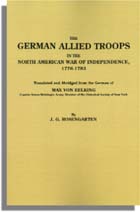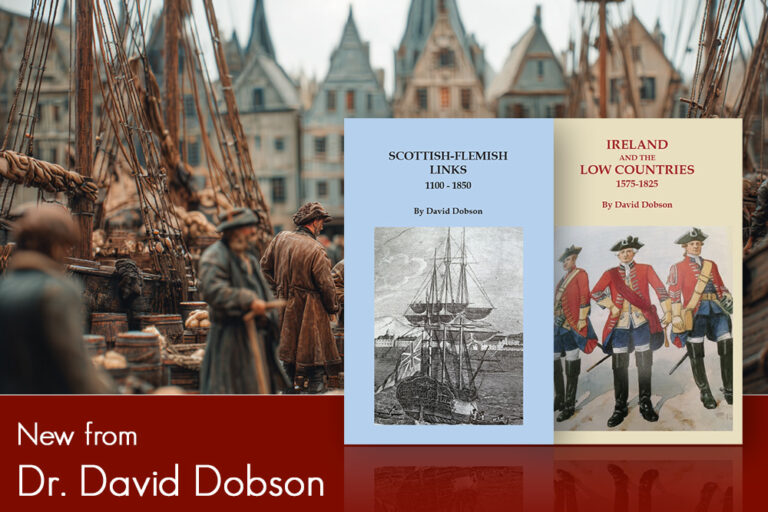
British Migration to the West Indies Before 1800
British Migration to the West Indies Before 1800
By Dr. David Dobson
The waning of Spanish power in the early seventeenth century enabled England to establish its Empire in the West Indies. This began with Barbados then spread northwards in the Lesser Antilles and to Jamaica by 1655.
English interest in the Caribbean during the sixteenth and early seventeenth, centuries was limited to piracy and raiding Spanish settlements, as led by adventurers such as Sir Walter Raleigh. The Spanish had virtually ignored most of the islands of the Lesser Antilles, discouraged by the hostility of the Caribs there. The Treaty of London in 1604, which ended the war between England and Spain, enabled the English to occupy islands which the Spanish had not settled in the Caribbean. St Lucia and Grenada were briefly held by England in 1605 and 1609. England established colonies in St Kitts in 1624, in Barbados in 1625, in Nevis in 1628, and in Montserrat and Antigua in 1632. Then, in 1655, Oliver Cromwell took Jamaica and Grand Cayman from the Spanish. The Bahamas was acquired in 1648. Providence, off the coast of Nicaragua, was settled by Puritans from New England in 1630s. Migration occurred from Barbados to the other English colonies in the Caribbean and as far north as the Carolinas during the seventeenth century. The economy of most of these islands initially depended on tobacco but subsequently on sugar. The profits emanating from such products encouraged investment in and emigration to the West Indies. During the eighteenth century, rivalry between France and Great Britain led to control of these islands changing hands from time to time. This happened on a large scale in 1763 with the end of the Seven Years War [known as the French and Indian Wars in North America] when several French West Indian islands, such as Grenada, St Vincent, Tobago and St Lucia, were ‘ceded’ or granted to Great Britain. These islands were soon populated by planters, merchants, and investors from the British Isles.
[av_image src=’https://genealogical.com/wp-content/uploads/2018/06/the-linen-market-santo-domingo-agostino-brunias-300×229.jpg’ attachment=’4980′ attachment_size=’medium’ align=’right’ styling=” hover=” link=” target=” caption=’yes’ font_size=” appearance=’on-hover’ overlay_opacity=’0.4′ overlay_color=’#000000′ overlay_text_color=’#ffffff’ animation=’no-animation’ av-small-hide=’aviaTBav-small-hide’ av-mini-hide=’aviaTBav-mini-hide’ admin_preview_bg=” av_uid=’av-4yhv02′]
The Linen Market. Santo Domingo Painting by Agostino Brunias
[/av_image]
Between 1650 and 1700 about half of all the English emigrants were bound for the West Indies. Recent research suggests that 20,000 headed for Jamaica, 43,000 for Barbados, and 30,000 for other Caribbean destinations. The main ports from which the English and Welsh sailed bound for the West Indies were Bristol, Southampton, and London, all ports increasingly engaged in trade with the Caribbean. The best sources on this aspect are the works of John Camden Hotten, and more recently Peter Wilson Coldham.
The West Indies attracted relatively few immigrants from Scotland until the 18th century. Those who were there were political and religious prisoners of war transported there in the aftermath of the Wars of the Three Kingdoms, 1638 to 1651, or Covenanters who opposed the religious policies of the Stuart Kings, and some felons, all of whom were sold as indentured servants to the colonists and planters. Though commercial links can be traced back as far as 1611 with the voyage of the Janet of Leith, the English Navigation Acts effectively banned direct trade between Scotland and the English colonies. The political union of England and Scotland in 1707 removed such obstacles, enabling trade and settlement by Scots to occur. Glasgow soon became a major sugar refinery centre, using sugar cane from the Caribbean. The failure of the Jacobites in 1715 and in 1746 led to hundreds of Scots prisoners of war being shipped to the islands in chains. From the mid-eighteenth centuries onwards, the Caribbean attracted investment by Scots; moreover, skilled agriculturalists, physicians, and merchants soon settled in the West Indian colonies. The Peace of Paris in 1763 provided opportunities for entrepreneurs in the Ceded Islands acquired by Great Britain from France. One historian has reckoned that around 80,000 Scots went to West Indies between 1750 and 1799.
The West Indies were also an important destinations for early migrants from Ireland. From the early seventeenth century onwards, significant numbers of Irish settled in Barbados, in the Leeward Islands, and especially Montserrat. By the late seventeenth century Montserrat had the highest concentration of Irish, possibly 75%, of any British colony in the Americas. Anthony Brisket, from Wexford, Governor of Montserrat, encouraged immigrants from Ireland in 1637. In Barbados, Irish merchants were prominent in the Tobacco Trade. Irish exports to the West Indies in the seventeenth and eighteenth centuries were mainly cargoes of salted beef, pork, butter, and linen, shipped in both English and Irish vessels. These merchant ships also carried emigrants, prisoners, and indentured servants. Vessels sailed from English ports, such as London and Bristol, bound for the Caribbean via Irish ports such as Cork and Galway. The provision trade from Ireland to the British colonies in the Caribbean flourished but experienced increasing competition from the Thirteen Colonies, though the salted fish exports from Ireland remained in great demand to feed the slaves. Over 40,000 men, women, and children left Ireland bound for the West Indies before 1800. Many were indentured servants, while a sizable minority were shipped in chains as felons or prisoners of war. Oliver Cromwell transported significant numbers of Irish prisoners to the Caribbean around 1650. Irish immigrants could be found at every level of society, for example William O’Brian, 2nd Earl of Inchiquin, was appointed Governor of Jamaica in 1690. Jamaica, which was taken from the Spanish in 1655, contained a significant population of Irish extraction by 1670
Though the West Indies had been a major destination for emigrants from the British Isles during the seventeenth century, except for the Scots, it declined in the eighteenth century as the emphasis on transatlantic settlement was in the Thirteen Colonies. Not only did North America attracted immigrants from Britain and Ireland but also from the British West Indies. The Thirteen Colonies had long traded with the British West Indies, exchanging fish and other provisions for sugar, rum, and fruit. This led to settlement by merchant families in both locations. Probably the most important migrant from the West Indies to America was Alexander Hamilton who was born in Nevis in 1755, moved to St Croix, later settled in New York in 1773, and died in there in 1804. Barbados, which attracted substantial immigration in the early seventeenth century, became overpopulated; consequently the surplus white population moved to the neighbouring islands of the Lesser Antilles, and also played a significant role in the settlement of South Carolina in the 1660s. The reverse happened in the aftermath of the American Revolution when substantial numbers of American Loyalists took refuge in the British West Indies. In the twentieth century a significant movement of people occurred from the West Indies to North America and the United Kingdom.
[av_hr class=’short’ height=’50’ shadow=’no-shadow’ position=’left’ custom_border=’av-border-thin’ custom_width=’50px’ custom_border_color=” custom_margin_top=’30px’ custom_margin_bottom=’30px’ icon_select=’yes’ custom_icon_color=” icon=’ue808′ font=’entypo-fontello’ admin_preview_bg=” av_uid=’av-2rwuv6′]
Bibliography
The Origins of Empire, N. Canny (ed), (Oxford, 1998)
The Atlantic World, T. Benjamin (Cambridge, 2009)
Empires of the Atlantic World, J.H.Elliott. (Yale, 2006)



